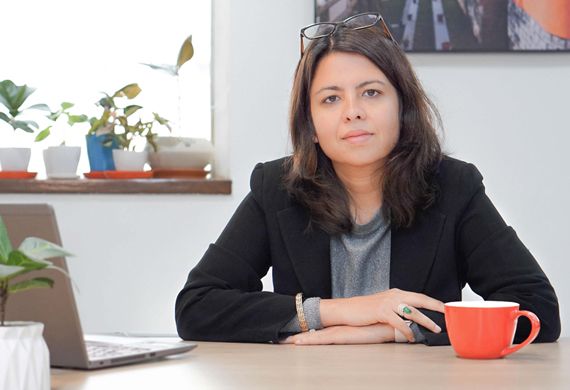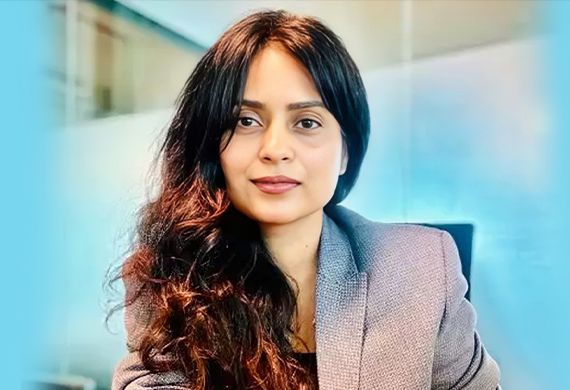
India's Urban Future Balances Smart City Tech with Cultural Heritage and Sustainability
By: Manisha Bhartia, Business Director & Head, BDP
Manisha Bhartia is a leading master planner and architect with over two decades of experience in designing city-wide masterplans, transit-oriented developments, retail regeneration, and large-scale residential projects across the U.K, Europe, the Middle East, South East Asia, and India. She chairs WLI for ULI India and serves on its executive committee.
In a recent conversation with Women Entrepreneurs Review Magazine, Manisha shares insights on how India is adapting to current trends, comparing its progress to regions like the UK, MENA, and Southeast Asia. She also discusses innovative approaches in urban planning, balancing economic viability with social impact, and financing models that prioritize social equity.
Given the current global focus on sustainable urban development, how do you see the Indian market adapting to these trends? Are there specific areas where India is leading or lagging behind in comparison to other regions like the UK, MENA, or Southeast Asia?
India's Smart Cities Mission has identified 100 cities for sustainable development, emphasizing energy-efficient infrastructure, renewable energy, and rainwater harvesting systems. Public transportation is also being revamped, with initiatives like metro expansions and electric buses. India is the third-largest solar market globally, and electric vehicle sales have grown significantly. In green buildings, both public policy and private sector initiatives have shown significant progress.
However, India lags behind regions like the UK, which leads in circular economy initiatives and comprehensive urban planning. Southeast Asia and MENA have advanced in water conservation (e.g., Singapore's water management) and energy-efficient construction (e.g., Dubai's green building regulations). India’s rapid urban growth presents challenges, and while progress is being made, the complexity of its urbanization requires stronger policies and faster adoption of global best practices to bridge the gap.
With increasing unpredictability due to climate change and global pandemics, how can urban planners ensure cities remain resilient and adaptable? What are some innovative approaches you've seen or implemented that can serve as a blueprint for other regions?
Urban planners can ensure cities remain resilient and adaptable by integrating flexible design strategies and sustainable infrastructure. BDP’s Patimban New City Masterplan in Indonesia exemplifies innovative urban resilience through eco-friendly planning. The 528-hectare waterfront development integrates mixed-use spaces, balancing industrial growth with environmental preservation. The masterplan includes sustainable transportation systems, green spaces, and water management infrastructure designed to reduce the impacts of climate change. By incorporating nature-based solutions and flexible urban infrastructure, the project aims to protect the city against environmental risks such as flooding and rising sea levels.
Another innovative approach by BDP involves "meanwhile use" in New York, where temporarily vacant spaces are activated for community benefit during redevelopment. This concept enhances urban health outcomes and social equity, providing short-term utility while ensuring long-term urban vitality.
Smart cities are often touted as the future, but the concept remains elusive in many regions. How can urban planners bridge the gap between smart city ideals and practical implementation, especially in developing markets like India?
Bridging the gap between smart city ideals and practical implementation in developing markets like India requires focusing on scalable and context-specific solutions. For example, low-cost IoT sensors for traffic management and waste collection can enhance city operations without the high costs of advanced tech.
Tailoring smart technology to the unique challenges of each cityprovides a roadmap for integrating smart city initiatives into everyday urban living.A strong example is the Smart Cities work by BDP in India, for cities like Udaipur and Kakinada. In Udaipur, the focus was on heritage-based area development, while Kakinada emphasized digital infrastructure and efficient municipal services.These projects demonstrate how localized solutions can lead to successful smart city implementation in developing markets like India.
There’s often a tension between sustainable design and practical, cost-effective urban planning. How can industry leaders strike the right balance between these two, especially when working on large-scale projects like city masterplans?
I don’t see this tension. Adopting sustainable design ensures long-term resilience for cities and urban developments while minimizing long-term operational costs. Too often, there's an undue focus on short-term gains, which short-changes future generations and the planet. Industry leaders must recognize that sustainable solutions are not merely a cost but an investment in future efficiency and stability.
One of the ways to strike this balance, so to speak, is to embrace early-stage planning that involves a multitude of disciplines that embed sustainability as a core value rather than an afterthought. Adopting technologies like Building Information Modeling (BIM) and Geographic Information Systems (GIS) is crucial. At BDP, we leverage BIM in almost all our projects, which not only enhances design efficiency but also significantly reduces costs and resource use. BIM’s ability to model and analyze environmental impacts in real-time ensures that sustainability is seamlessly integrated into every aspect of the design process.
With the increasing emphasis on smart city development, how can urban designers balance the need for technological advancements with the preservation of cultural heritage and human-centered design? What potential pitfalls should leaders in the industry be wary of?
The push towards smart city development must never come at the expense of cultural heritage or human-centered design. Involving local communities in the planning process is crucial, yet it’s often overlooked, particularly in India. Industry leaders need to be wary of several pitfalls: an overemphasis on efficiency, standardized solutions that result in homogeneous urban spaces, and neglecting future adaptability. Additionally, creating a digital divide between socio-economic groups can exacerbate inequalities. Such a myopic approach can lead to developments like New Songdo in Korea, which, despite their technological advancements, lack vitality and individuality.
True smart city design recognizes that the essence of a great urban space remains rooted in human experience. The principles of good urban design should guide smart city developments, ensuring that technology serves to enhance, not diminish, our vibrant cultural and social landscapes.
How can urban planners and designers strike a balance between economic viability and social impact in large-scale projects? What innovative financing models or partnerships could support projects that prioritize social equity without compromising profitability?
An urban designer is often a multi-tasker and a puppet master, balancing the inputs of various consultants, clients, and communities, while addressing site constraints, economic viability, and transport needs, all to create a lasting social impact. To strike a balance between economic viability and social impact, innovative financing models can play a pivotal role.
One effective approach is the use of Business Improvement Districts (BIDs). BIDs enable property owners within a designated area to collectively fund improvements and services that enhance the local environment and economic vitality, creating a win-win scenario.
Another model is the developer mandate for public realm development, as seen in the UK where they may be required to enter into Section 106 agreements or pay a community infrastructure levy (CIL) with and to local authorities. These agreements can mandate that developers provide specific public amenities, such as parks, plazas, or improvements to existing infrastructure, as part of their development projects; or pay CIL, which is used to support the local infrastructure needs arising from new development.
In India, planning obligations may include requirements for developers to contribute to affordable housing and other community benefits. Public-private partnerships (PPPs) can leverage both public resources and private investment to fund developments that prioritize social equity while ensuring profitability.
Most Viewed
- 1 Women's Health Startup HerMD Closing Doors Amid Industry Challenges
- 2 5 Famous Women in Indian Armed Forces
- 3 Saudi Women No longer Require Male Permission for Clothing Choices, says Prince MbS
- 4 Kolkata Medtech Startup Innovodigm Raises Rs 5.5 Crore Seed Funding Led by IAN Group
- 5 Yamunanagar's Kashish Kalra Honoured after Securing 111th Rank in UPSC Civil Services Exam
- 6 Madurai Appoints Its First Woman Corporation Head
- 7 IAS Vijayalakshmi Bidari Appointed as the new Nagpur Divisional Commissioner
- 8 American Entrepreneur Lucy Guo Overtakes T Swift to become Youngest Female Billionaire
- 9 ICC Women's World Cup 2025 Trophy Showcased at Indore's Holkar Stadium
- 10 Aparna Saxena's Beauty Venture AntiNorm Launches in India
- 11 Vidya Nataraj Co-Founded BlueStone Jewellery & Lifestyle files IPO
- 12 5 Women Freedom Fighters of India
- 13 Dr. G Krishnapriya appointed as CEO for Trichy
- 14 M3M & Sirona Partner to Introduce Menstrual Hygiene Vending Machines in 15 Locations
- 15 Punjab Govt launches SHE Cohort 3.0 Supporting Tech-led Women Startups
- 16 Indian origin Lawyer, Sweena Pannu appointed as the US New Superior Court Judge
- 17 The Aurora Tech Award recognizes 4 Indian Women-led Startups
- 18 Kerala's Republic Day parade featured an all-female tableau
- 19 Manisha Kabbur Becomes Karnataka's First Woman International Karate Coach
- 20 Director K. S. Ravikumar's Daughter Maalica Ravikumar Launches Life Coaching Company 'Evergrowth Academy' for Women
- 21 Leezu's Raises Pre-Seed Funding to Accelerate Growth in Sexual Wellness Industry
- 22 Sattu: Super-easy summer drink for PCOS gut healing
- 23 Swathi Nelabhatla creates Sitha App, India's First Women-Exclusive Gig Platform
- 24 7 Timeless Female Kathak Dancers & their Iconic Legacies
- 25 Meet 7 Iconic Women Architects of Modern India & their Most Impactful Work
- 26 This Woman-led Insuretech Startup is Helping Bridge the Education Financing Gap in India
- 27 Women Leaders Share Lessons Learnt from India Women's WC Win
- 28 5 Enterprising Women Founders Powering Singapore's Tech & Innovation Landscape
- 29 4 Women. 4 Stories. One Vision for Smarter, Stronger Healthcare
- 30 Global Gender Gap Narrows to 68.8%, But Full Equality 123 Years Away: WEF Report 2025
- 31 Changemakers: 7 Women Entrepreneurs Taking the Make in India Movement Forward
- 32 Meet Lucy Guo, The Youngest Self-Made Female Billionaire Disrupting Tech
- 33 How Women are Driving India's Festive Online Shopping Surge






